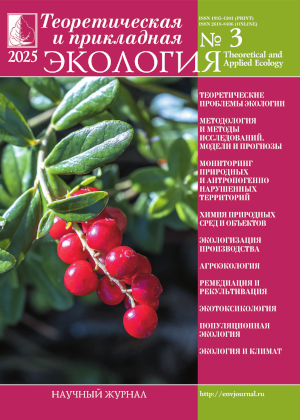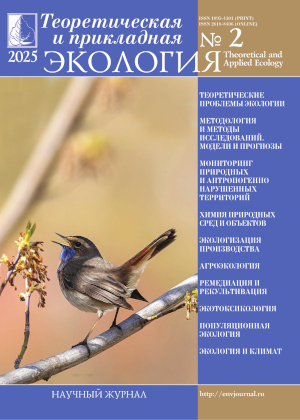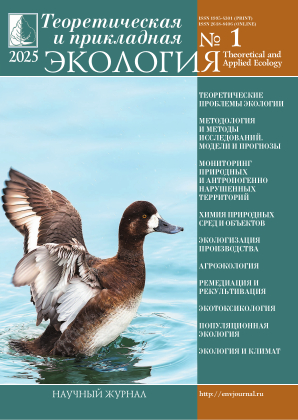 ISSN 1995-4301
ISSN 1995-4301(Print)
ISSN 2618-8406
(Online)
Online version of the journal
|
Microsatellite analysis of populations of the ussuri sika deer acclimatized in the European part of Russia |
||||
| A.P. Kaledin, S.V. Beketov, D.V. Zhukov, V.I. Fertikov, V.M. Makeeva, A.V. Smurov, A.M. Ostapchuk, E.А. Konorov, Yu.A. Stolpovsky | ||||
| Section: Population ecology |
||||
| In the Russian Federation, the indigenous population of sika deer (C. nippon hortulorum, Swinhoe, 1864) lives only in a small area of the Primorsky Kray. Since the beginning of the twentieth century, along with measures for the conservation of sika deer, they began to acclimatize it, with settling over a large territory and creating new habitats. Currently, up to 40% of the total population of sika deer in the Russian Federation is concentrated in the European part. Despite the long period of existence in the new ecological conditions, molecular genetic methods were not used in the study of sika deer. The presented work presents for the first time the results of microsatellite analysis of two populations of sika deer from Tver (Tver population) and Kaluga (Tarusa population) regions. F-statistics calculated for 12 STR-loci (BMS1788, Rt1, C143, OheQ, FCB193, C217, Rt24, C32, BMS745, NVHRT16, T40, C276) indicate a lack of heterozygous genotypes and indicate a weak divergence of populations. In the interpopulation comparison, the Tver population was distinguished by a greater allelic diversity and a significant number of private alleles. Genetic variability in observed and expected heterozygosity for the Тver population was HO 0,47 and HE 0,51 and for the Tarusa population – HO 0,52 and HE 0,49, respectively. At the same time, both studied populations of sika deer were characterized by a decrease in allelic diversity and heterozygosity relative to the “maternal” aboriginal Far Eastern population. Accordingly, at the present stage of hunting resource management, a reasonable artificial expansion of the range of rare and economically especially valuable animal species due to their dispersal and acclimatization is impossible without a genetic analysis of populations using highly polymorphic molecular markers and the use of standard estimated indicators of dynamic processes in populations. According to the results of the study, it can be concluded that the genetic diversity of the studied acclimatized populations of sika deer in the Tver and Kaluga regions does not differ significantly, and the observed difference in private alleles suggests an independent development of the gene pools of the populations under consideration. | ||||
| Keywords: sika deer, populations, introduction, microsatellites, allelic variability, genetic divergence. |
||||
| Link | ||||
| Article published in number 2 for 2022 DOI: 10.25750/1995-4301-2022-2-130-137 |
||||
|
|
36, Moskovskya street, Kirov, 610000, Editorial Board "Theoretical and Applied Ecology." Phone/fax: (8332) 37-02-77 e-mail: envjournal@vyatsu.ru The journal was founded in 2007 |
||||||




 Select viewing options
Select viewing options